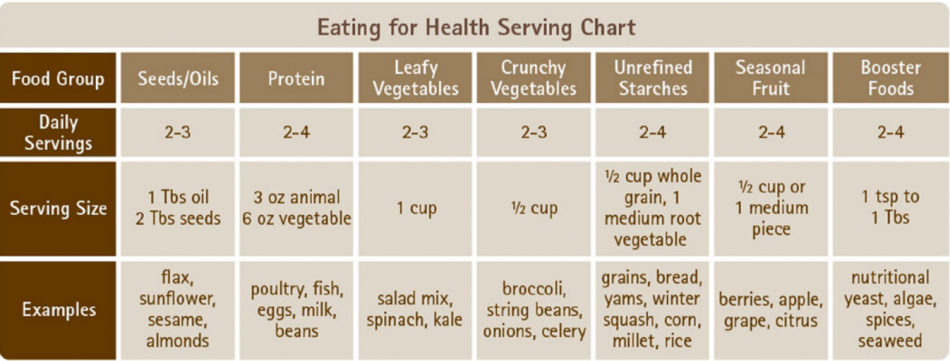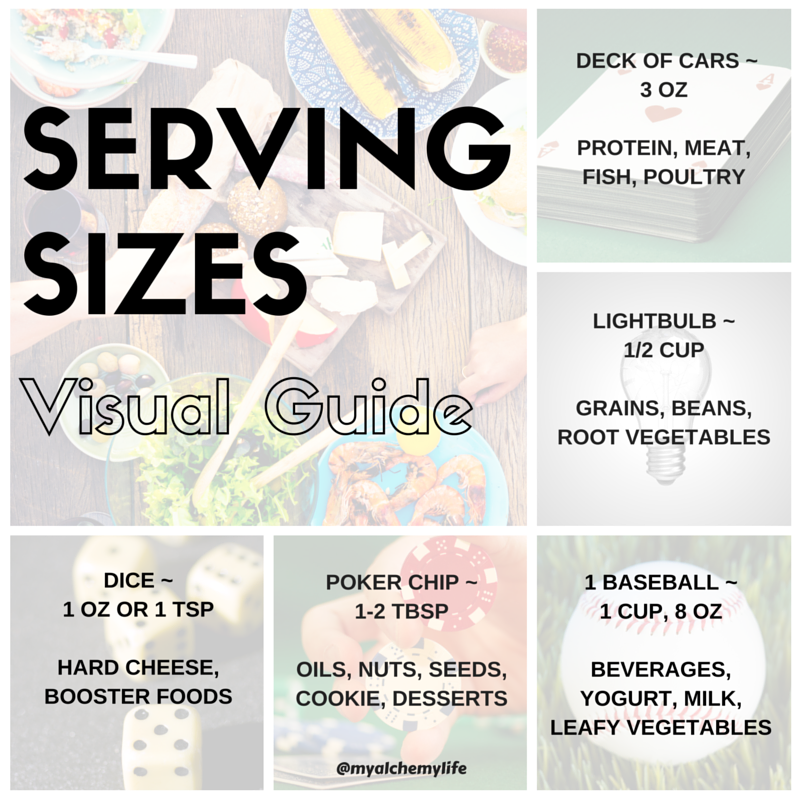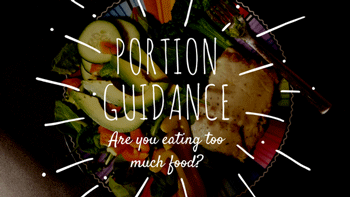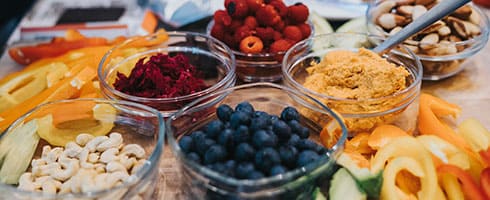Part of eating for optimum health is learning to know when you are full and putting the right amounts of nourishing foods in your body. The biggest key to not overeating is to become aware of what your body needs to thrive and eating moderate amounts of food. Follow these guidelines as a starting point to help you learn what the right portions of food are for YOUR BODY.
In general you will hear people talking about servings sizes and portion sizes.
A serving size is usually used when people are referring to the the recommended amount of food or beverage to consume during a meal or snack. It can be measured in ounces, teaspoons, tablespoons or cups. On the other hand a portion size is the amount of food offered on your plate or in a package. It can be large, moderate, or small and can contain one or multiple servings. As part of a healthy diet you need to learn what healthy portion sizes are!
As with most things, moderation is key. Eating moderate portions of foods in your meals is the most supportive for your body. Many people overeat! Eating the right balance of foods in moderate amounts is most supportive for digestion, nutrient intake, and elimination. It also helps with weight maintenance, blood sugar stability and feeling fulfilled, but not overly full.
The average portion sizes of common foods continue to grow, so learning to manage this on your own is key! Frequently eating more then your body needs can lead to nutrient imbalances, weight gain, organ strain, digestion and elimination issues as well as issues with energy, mood, sleep and brain function.
So how to make sure you are not overeating? Here is some support:
Visual Cues for Servings
Serving size vary depending on the type of food.
- Meat, fish, poultry: Deck of card or checkbook ~ 3 oz
- Grains, beans, root vegetables: 1/2 baseball ~ 1/2 cup
- Beverages, yogurt, milk, leafy vegetables: 1 baseball ~ 1 cup, 8 oz
- Oils, nuts, seeds, cookie, desserts: Poker chip 1.5” or golf ball 1.7” ~ 1-2 Tbs
- Hard cheese or booster foods: Dice or fingertip ~ 1 oz or 1 tsp
How many servings should I eat a day?
Eating for health guidelines recommend the following guidance for daily servings:
- Fats: 2-3 servings per day.
- Liquid fats (oils): Olive, coconut, sesame, avocado oil, ghee
- Solid fats: cow butter, coconut butter, cacao butter, nut butter
- Protein: 2-4 servings per day. Learn more about protein and calorie requirements.
- Carbohydrates: 4-10 servings per day
- Depending on the diet direction you are following these daily servings might change.




